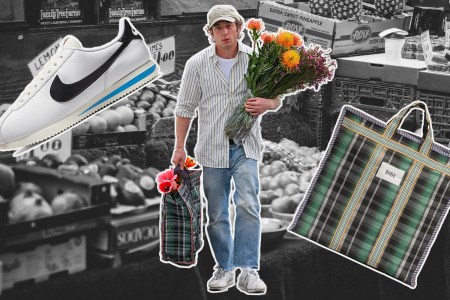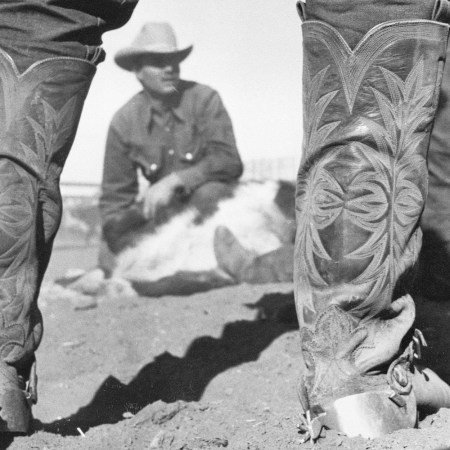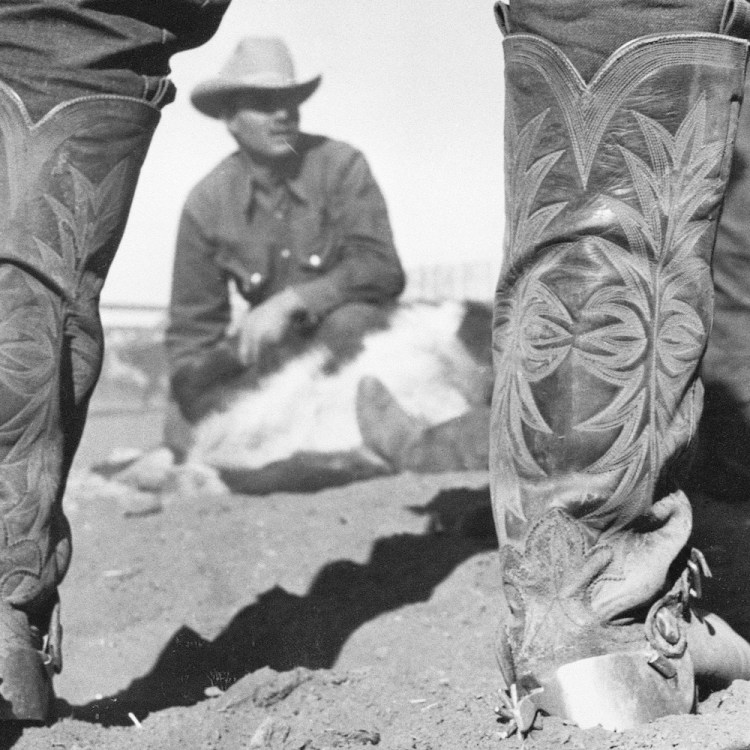John Mulaney Presents: Everybody’s in L.A. was, by all accounts, a slam-dunk success. Part of the Netflix Is a Joke festival and premised as a live talk-show-cum-giant-inside-joke, the series concluded its six-day nightly run last Friday and is now available to view in its entirety on the platform. If you’re a fan of Mulaney’s or an Angeleno, I highly recommend you do.
Everybody’s in L.A. is now circulating on the holy grail benchmark that is Netflix’s Top 10, a massive win for Mulaney and for Netflix, considering the streaming giant’s 270 million subscribers and its recent foray into into live material. The 41-year-old comedian is a hot commodity: his appearance on My Next Guest Needs No Introduction, hosted by talk show legend and Everybody in L.A. guest David Letterman, is also currently ranking on the Top 10.
This success is surprising — an appointment talk show that doesn’t include “Daily” or “Late” in its title feels strange in 2024, and live programing is still relatively uncharted waters for Netflix — and yet somehow feels completely expected. Intentionally underproduced and awkward, Mulaney’s experiment with the live format shredded the typical talk show script before running it over with recurring bit/delivery robot Saymo, and yet the show felt acutely in line with his zany brand of comedy that’s sold out stadium tours and earned the former SNL writer a primetime Emmy.
Instead of the standard shlock, the episodes were guided by nightly topics that, naturally, related to the city of Los Angeles, which is a self-proclaimed enigma to recent transplant Mulaney; these spanned coyotes, earthquakes and the paranormal. There were prerecorded segments, including one with his Oh, Hello co-star Nick Kroll. There were patented Richard Kind (a sidekick cohost for the show) jokes, awkward group conversations (Mulaney held court from a deep, carpet-print square armchair) and landline call-ins galore, including from Los Angeles Mayor Karen Bass. There was a very detailed map of L.A., an incredibly uncomfortable Ray J appearance and institutional-but-aging punk rockers.
Jeremy Allen White Just Loves a Farmers Market Flex
Is it really an LA outing without a little Bode?The cohort of high-profile celebrity guests that Mulaney was able to secure, many in town for the same Netflix comedy festival, was also expected, and surely a boon to streams. Patton Oswalt (episode 3) is a friend of Mulaney’s, as is Will Ferrell (episode 1), and Jon Stewart (episode 2), Jerry Seinfeld (also episode 1) and Pete Davidson (episode 5). Flea made an appearance, Wilco too (the latter as a musical guest, the former as the object of a scavenger hunt). David Lynch, reportedly, passed.
Everybody’s in LA, a Vibe-Based Production
Paramount to the unfettered ride of Everybody’s in L.A. — a Vulture staff writer quipped that they thought the show would “nerf Mulaney’s career if it was on every night, especially live on Netflix,” and that doesn’t feel so far off — is the vibe of the show.
The concept of Los Angeles would seem to be the obvious contender for atmosphere provider, given that it is a program ostensibly about the concept of Los Angeles, but the set aesthetic of Everybody’s in L.A. — a cavernous house in the hills that hasn’t been touched since the ’70s and appears to have been decorated by some combination of Albert Hadley, L. Ron Hubbard and George Lucas — along with a geriatric runtime of 7 p.m. PT, and most pertinently, Mulaney’s wardrobe, all played an outsized role in establishing a freewheeling backdrop for six-plus hours of Mulaney and Co. hijinks.

Mulaney cuts a new man in Everybody’s in L.A. from the quaffed, slim-cut suit, boyishly charming comic we’ve come to know. (Astute culture vultures will point out that this change was previously evident at the Oscars.) His new caricature — and it is very much a caricature, even if some of the real thing is peppered in — instantly invokes the Everybody’s in L.A. universe as much as a paneled coffee table, an appealing mish-mosh of Johnny Carson and Jerry Maguire, with a conspicuously e-boy-leaning middle part to boot. (We dig it!)
His clothing, too, helps fully realize a talk show host persona. Composed silky suit separates and bold repp ties, shiny Scarosso derbies, even shinier pants from the Olsen twins’ cult designer label The Row. It’s a far cry from the ill-fitted Jimmy Fallons of the industry, a treasure trove of Paul Stewart and Oliver Peoples for the menswear freaks to pick through and as much of a signifier for what the show is as Thomas Shelby’s suits are in Peaky Blinders. Mulaney literally opened his final monologue with this tongue-in-cheek quip: “After tonight we are done, because after tonight I am out of cool outfits.”
Carson-Coded Costuming
Like much of the show’s seemingly accidental comedic prowess, this excellent costuming was fully intentional. “The wardrobe direction didn’t really solidify until John shared the stage with me, but once I saw that, I immediately put the [wardrobe] filter of the iconic ’60s, ’70s Los Angeles talk shows — David Letterman, Johnny Carson — what those clothes look like, those kinds of suits and silhouettes,” explains Michael Fisher, Mulaney’s personal stylist for over a decade and the brain behind the show’s fashion.
Unlike his traditional performances, a six-show format, especially one backdropped against MCM furniture and an ungodly amount of patterned carpeting, meant there was plenty of room to depart from Mulaney’s standard stand-up uniform. As Fisher explains it, the whole wardrobe was purchased specifically for the show, offering a particular freedom from pressures of red-carpet loaners or sponsored one-nighters. “We didn’t have to abide by any house rules,” he says. “We could mix high and low, Prada with J. Press, have an assortment of ties and not be at the mercy of press loans and PR people.” (This means, among other things, that much of the stock you saw on the show can actually be purchased.)
If Everybody’s in L.A. is a calculation on how to break the doldrums of modern late-night, then the wardrobe is the key variable to solve. “There’s such a uniform and a formula for late-night, and it’s always a navy suit, or black suit and a tie. But with John, and because this wasn’t a late-night show, this was at seven o’clock, we didn’t have to do it,” Fisher says, suggesting that the costume discussions were a serious part of the conversation. “I wanted John to feel comfortable, and be able to do his job. But at the same time, I didn’t want it serious. It was funny, and it is a sketch-comedy show. And that should be entertaining.”

Beyond the obvious Carson-Letterman comps, Fisher was inspired by artists — Wayne Thiebaud, David Hockney and the fashionings of a young Andy Warhol — when putting together the looks for Everybody’s in L.A. (Not an easy feat, by the way — Fisher told me that it took him nearly three weeks of pulling to put together the 11 total outfits prepped for the series.) It’s the little details gleaned from these forgotten icons — the repp ties and golden blazer buttons — that set Mulaney as a host out of time, yet totally in command of the decidedly wacky vibes that come with an hour special dedicated to coyotes.
All of the subliminal style is top-tier, but none was more exceptional than the daily staple of Mulaney casually checking his wrist at the top of the show before regaling the audience with the live time in Los Angeles. It’s a grounding bit in a winding (sometimes meandering) run of show, but the veritable gold-mine of watches — a Rolex I recognized, a Seiko I didn’t, as well as timepieces from Cartier, Jaeger-LeCoultre, Chopard and IWC — is the ultimate accompanying treat for the in-the-know viewer and a curious pleasure for the oblivious.
Will Everybody’s in L.A. be back for more? It’s unclear, concerning both Netflix and Mulaney’s willingness and the viability of a program that revolves around demanding to know what type of car your call-in fan drives. But one thing is absolutely clear: we need more green blazers on TV, stat.
This article was featured in the InsideHook newsletter. Sign up now.

























